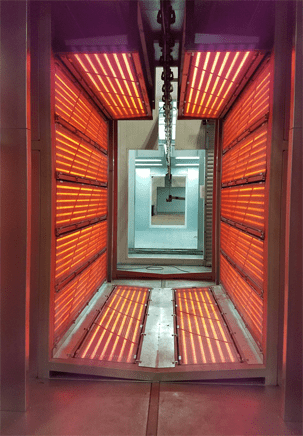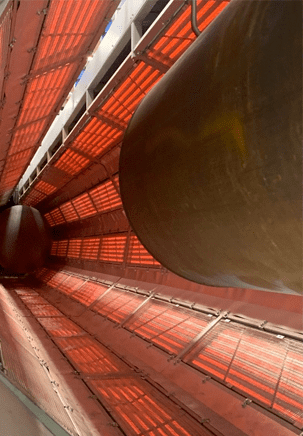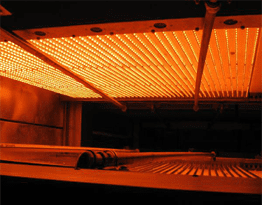
Retrofit Solutions
Fuel-free upgrades for existing power plants.



W We invite you to take advantage of our expertise and cutting-edge technologies to transition your power station towards a more efficient and environmentally safe mode of energy generation.
N NIMEC’s solutions allow you to preserve existing infrastructure, minimize capital expenditures, substantially reduce operational costs, and significantly lower the carbon footprint, ensuring reliable and sustainable performance for the long term. Moreover, thanks to the implementation of our technologies, the cost of generated electricity can be reduced severalfold compared to traditional methods, unlocking new opportunities to increase profitability and enhance the competitiveness of your energy enterprise.
T The application of our magnetic energy systems enables the modernization of existing gas and coal-fired power plants without the need for their dismantling or destruction. Boilers, primary turbines, and key infrastructure components can be preserved.
O Our solutions are seamlessly integrated into the existing architecture of the plant, providing an alternative source of energy without the use of fossil fuels.This approach allows for a significant reduction in emissions, enhanced environmental performance, lower operational costs, and an extended lifespan of already constructed facilities, avoiding the expenses associated with complete reconstruction.
A As we are all aware, the process of electricity generation at a coal-fired power station begins with coal mining. This is a complex and costly stage, involving drilling, blasting, and the development of mines or open-pit operations. Significant pollutant emissions and high energy consumption occur even at this initial stage.
S Subsequently, coal must be transported—typically over long distances—using rail or road freight. This adds substantial logistical costs and further increases the carbon footprint before the fuel even reaches the power plant.
A At the station itself, coal is stored in large open-air stockpiles, exposed to weather conditions, leading to additional environmental contamination. The coal is then crushed and fed into boilers where it is burned to heat water, producing steam. This high-pressure steam drives a turbine connected to an electric generator, ultimately producing electricity.
H However, this entire process involves continuous energy losses, high operational costs, and massive emissions of carbon dioxide (CO₂), sulphur oxides (SOₓ), nitrogen oxides (NOₓ), and particulate matter. Additionally, the disposal of ash and slag presents serious environmental hazards.
T Thus, the cost of electricity generated at coal-fired plants stems not only from production expenses but also from the costs of extraction, transportation, emission treatment, and waste disposal. Moreover, the environmental damage remains immense—air pollution, climate change, soil degradation, and water contamination.
A At its core, the process of thermal power generation revolves around transferring energy to water: heating it into steam, which drives the turbine, and then repeating the cycle. This is, indeed, a masterpiece of engineering ingenuity.
T To significantly enhance this process, infrared radiation can be employed in the boiler for water heating instead of traditional fuel combustion. Infrared lamps can be manufactured in any shape and size, allowing easy integration into existing boiler designs without major reconstruction efforts. Powered by electricity, they consume minimal energy and provide stable, targeted heat delivery. With our innovative, compact, and highly efficient energy solutions, the electricity required for infrared heaters can be generated autonomously, without the need for fossil fuels. This opens new opportunities for upgrading coal-fired power stations, dramatically reducing operational costs and minimizing environmental impact.
Advantages of Infrared Heating over Conventional Combustion
1st Higher Heat Transfer Efficiency. Infrared radiation transfers energy directly to water molecules, causing minimal impact on the boiler’s structural components. This reduces thermal stress on pipelines and heat exchange surfaces, thereby substantially extending their service life and lowering maintenance costs.
2nd No Pollution. There are no emissions of carbon dioxide, nitrogen oxides, or sulphur oxides, greatly easing the environmental burden.
3rd Instant Start and Stop. Infrared heaters achieve operational power rapidly and can be shut down just as quickly, minimizing energy losses during transitional phases.
4th Precise Temperature Control. Water heating can be precisely regulated, thereby increasing the overall efficiency of the system.
5th Minimal Equipment Wear. The absence of open flames and high combustion temperatures significantly reduces mechanical wear on the boilers, prolonging the lifespan of critical equipment.




